
Copper"s versatility in electronics and construction industries. "
Copper is one of the most abundant transition metals in the Earth's crust. It occurs naturally in various minerals and ores, including chalcopyrite, bornite, malachite, and cuprite. Copper has been used by humans for thousands of years. It was one of the first metals to be discovered and utilized, dating back to ancient civilizations such as the Egyptians and the Romans. The Bronze Age, which followed the Stone Age, was named after the widespread use of copper alloys like bronze.
Copper has a reddish-orange color and a metallic luster. It has a relatively high melting point of 1,984 degrees Fahrenheit (1,084 degrees Celsius) and a boiling point of 4,643 degrees Fahrenheit (2,562 degrees Celsius). It is a relatively dense metal, with a density of 8.96 grams per cubic centimeter. Copper is an excellent conductor of electricity and heat. It has the second-highest electrical conductivity among all metals (after silver), making it widely used in electrical wiring, power transmission, and electronics. Its high thermal conductivity also makes it suitable for heat exchangers and cooking utensils.
Copper is a relatively red metal that has a very high electrical and thermal conductivity (among pure metals, only silver has a higher electrical conductivity at room temperature than copper) because copper artifacts discovered date back to 8700 years ago. Copper is probably the oldest metal used by humans. In addition to being present in various minerals, copper is also found in metallic form.
According to US Geological Survey, copper is the third most widely used industrial metal in the world after iron and aluminum. About three-quarters of this metal goes to make electrical wires, communication cables, and electronics. About two-thirds of the earth's copper is found in igneous rocks, and about a quarter occurs in sedimentary rocks. This metal is flexible and flexible and conducts heat and electricity well, which is why it is widely used in electronics and wiring.
The copper is commonly found in nature along with sulfur. Generally, it is produced from a multi-stage process that starts from mining and concentrate of low-value copper ore sulfide ore and after melting and electrolytic purification produces pure copper cathode. Increasing the share of copper in acid washing of metal oxide metal is obtained.
Due to its characteristics such as singularity or composition, wired, malleable, thermal conductivity, and rust resistance, copper has become one of the main industrial metals in terms of consumption after iron and aluminum in the ranking 3. Electrical applications of copper, such as power generation and transmission, building wiring, communications, electrical and electronic products, account for approximately three-quarters of total copper consumption.
Architecture is the largest unipolar market after electrical and electronic products, transportation, industrial machinery, and consumer and main products. Copper by-products are easily recycled from unused copper products and products and significantly join the copper supply. The cathode mesh is generally converted into different shapes based on the intermediate casting process such as slabs, billets, sheets, wires, and copper rods, pipes, and copper alloys.
Copper forms various alloys by combining it with other metals. Bronze, for example, is an alloy of copper and tin, while brass is an alloy of copper and zinc. These alloys often exhibit enhanced properties compared to pure copper, such as increased strength, hardness, and corrosion resistance. Copper has good resistance to corrosion, especially when exposed to atmospheric conditions. Over time, it develops a greenish patina called verdigris, which acts as a protective layer on the surface, slowing down further corrosion.
Copper has a wide range of applications due to its properties. Besides electrical wiring and electronics, it is used in plumbing systems, roofing materials, coins, statues, decorative items, and musical instruments. It is also an essential nutrient for plants and animals. Copper is highly recyclable, and it retains its properties even after recycling. This makes it an environmentally friendly metal, as it can be reused without significant degradation in quality.
Copper is known for its antimicrobial properties. It has been used for centuries to reduce the risk of infection in water supplies and medical equipment. Copper surfaces can kill or inhibit the growth of bacteria, viruses, and fungi. Additionally, copper is an essential nutrient for the human body and plays a role in various physiological processes. Copper is primarily extracted from copper-rich ores through mining. The leading copper-producing countries include Chile, Peru, China, the United States, and Australia. The mining and processing of copper can have environmental impacts, including habitat destruction and water pollution, which are important considerations for sustainable production.
-
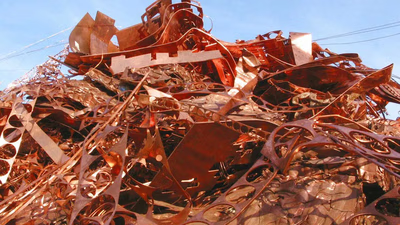
Copper recycling significantly conserves natural resources by reducing the need for new mining and extraction, thus preserving valuable copper ore reserves. The process requires 85-90% less energy than primary production, leading to lower greenhouse gas emissions and a reduced carbon footprint. Recycling also diverts copper waste from landfills, minimizing environmental pollution. The industry creates jobs in collection, sorting, processing, and manufacturing recycled copper, contributing to economic growth. Various sources of recyclable copper include wiring from electronics, pipes, fittings, and even discarded coins. The recycling process involves sorting, shredding, melting, and purifying to produce new copper products or alloys. Approximately 40% of annual copper alloy consumption comes from recycled materials. Copper"s properties such as high electrical and thermal conductivity make it essential in various applications including electrical transmission and heat exchangers.
Its corrosion resistance further enhances its utility across industrial sectors. "
-
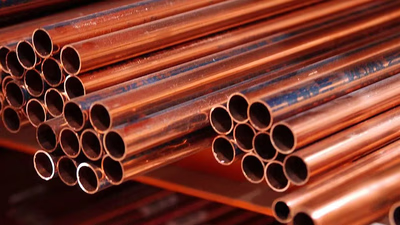
Copper ingots are primarily produced through smelting and casting, where copper ore is extracted, processed, and refined. The smelting process involves heating concentrated copper ore with fluxes in a furnace to separate impurities, resulting in molten copper. This molten metal is then poured into molds to solidify into ingots. An alternative method for producing copper ingots is electrolytic refining, which uses an acidic copper sulfate solution to deposit copper ions onto a cathode through electrolysis. Copper ingots come in various grades, with purity levels ranging from 99. 95% to 99. 99%. These ingots serve as a fundamental form of copper for manufacturing products and alloys.
Additionally, recycling processes can convert scrap copper into new ingots by shredding and smelting used materials like wiring and pipes. Copper has historical significance dating back to ancient civilizations and remains vital in modern applications due to its excellent conductivity and malleability.
-

The Middle East and West Asia exhibit a robust demand for copper, driven by urbanization, construction, and industrial growth. Key countries like Saudi Arabia, Iran, Turkey, and the UAE are experiencing significant infrastructure development that necessitates large quantities of copper for electrical wiring and plumbing systems. Despite having some mining operations, the region remains a net importer of copper, relying on imports from major producers such as Chile and Peru. Dubai and Istanbul serve as crucial trading hubs for copper distribution. The rise in population and disposable incomes has further increased the demand for electrical devices, making copper essential in manufacturing components like transformers and motors. Additionally, the region is witnessing a growing emphasis on copper recycling to promote sustainability. Global copper prices significantly influence the local market dynamics, affecting profitability across various industries. While the high cost of copper compared to alternatives like aluminum can deter some users, its superior conductivity and safety make it a preferred choice in electrical applications. The ongoing industrial expansion across sectors such as construction and automotive continues to drive copper consumption in this region.
-
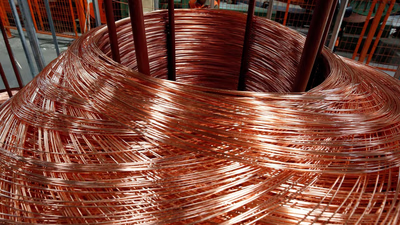
Copper toxicity can occur from excessive consumption or inhalation, leading to symptoms like nausea, abdominal pain, and severe organ damage. Acute cases are rare and often linked to occupational exposure or accidental ingestion. Wilson"s disease, a genetic disorder affecting copper metabolism, results in copper accumulation in organs, necessitating treatment to reduce intake and eliminate excess copper. Allergic reactions to copper may arise from skin contact, causing irritation or dermatitis. Copper"s antimicrobial properties have led to its use in medical settings to reduce infection risks. Recent advancements include a bioactive implant that combines collagen with copper particles, significantly reducing bacterial populations and enhancing bone growth. This innovative approach offers a potential one-step treatment for bone infections without antibiotics. While copper is essential for various bodily functions, excessive exposure can lead to health issues.
Its traditional medicinal uses are often unsupported by scientific evidence, although some claim benefits for arthritis relief. The metal"s ability to inhibit microbial growth has prompted its application in hospital environments to combat infections. "
-
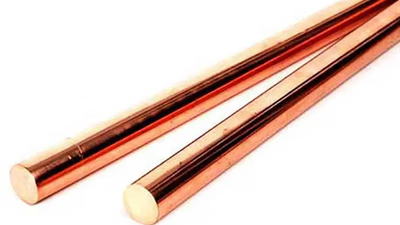
Copper is a vital transition metal, known for its high electrical and thermal conductivity. It has been utilized since ancient civilizations, marking the beginning of the Bronze Age. Found in various minerals, copper is primarily extracted from ores through mining processes. Its applications span across electrical wiring, plumbing, and architecture, making it the third most widely used industrial metal globally. The majority of copper consumption is attributed to electrical applications, with significant recycling potential that enhances its sustainability. Copper alloys like bronze and brass exhibit improved properties, further expanding its utility. Additionally, copper"s antimicrobial properties make it valuable in medical settings. However, the environmental impact of copper mining necessitates sustainable practices to mitigate habitat destruction and pollution. "
-
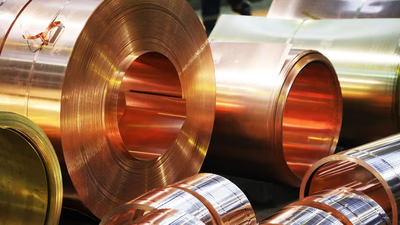
Copper and its alloys, including bronze, brass, and cupronickel, play a significant role in various industries due to their unique properties. Bronze, an alloy of copper and tin, is known for its strength and corrosion resistance, making it ideal for sculptures and mechanical components. Brass, primarily composed of copper and zinc, is valued for its malleability and attractive appearance, commonly used in musical instruments and plumbing fittings. Cupronickel combines copper with nickel to enhance corrosion resistance in marine applications. Other notable alloys include leaded brass for improved machining properties and special alloys like aluminum bronze that offer high strength and thermal conductivity. The classification of these alloys is based on their composition, with variations such as alpha brass (less than 37% zinc) and phosphor bronzes that include additional elements for enhanced performance. Understanding these types of copper alloys is crucial for businesses engaged in import-export activities within the Middle East trade platform.
-
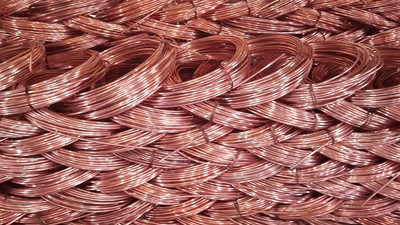
Copper is a vital metal extensively used across various industries, particularly in electricity and construction. Its excellent conductivity makes it the preferred choice for electrical wiring, power cables, and electronic devices. The electricity sector is the largest consumer of copper due to its efficiency in transmitting electricity. Additionally, copper"s strength and resistance to corrosion enhance its suitability for motors and converters. In telecommunications, copper remains essential for high-speed data transmission despite advancements in fiber optics. The metal"s versatility extends to building construction, where it is utilized in plumbing, roofing, and heat transfer systems. Its recyclability adds an environmental benefit, allowing for sustainable practices in construction. Copper"s unique properties also contribute to safety; it does not burn or release harmful gases during fires and helps prevent bacterial growth in water supply systems. Overall, copper"s multifaceted applications underscore its importance in modern infrastructure and technology.







